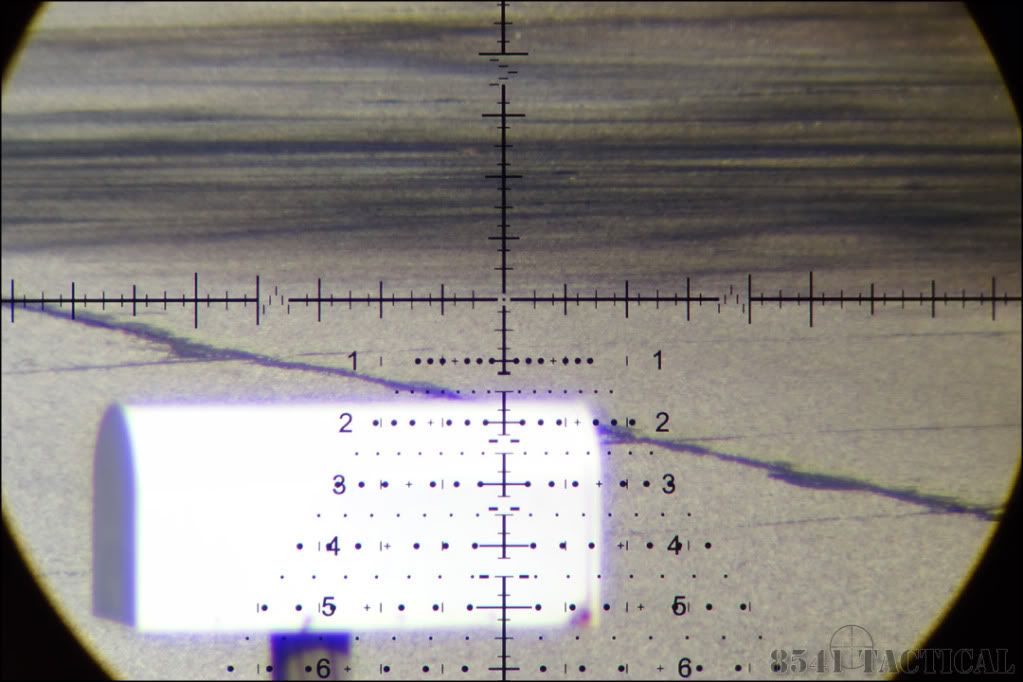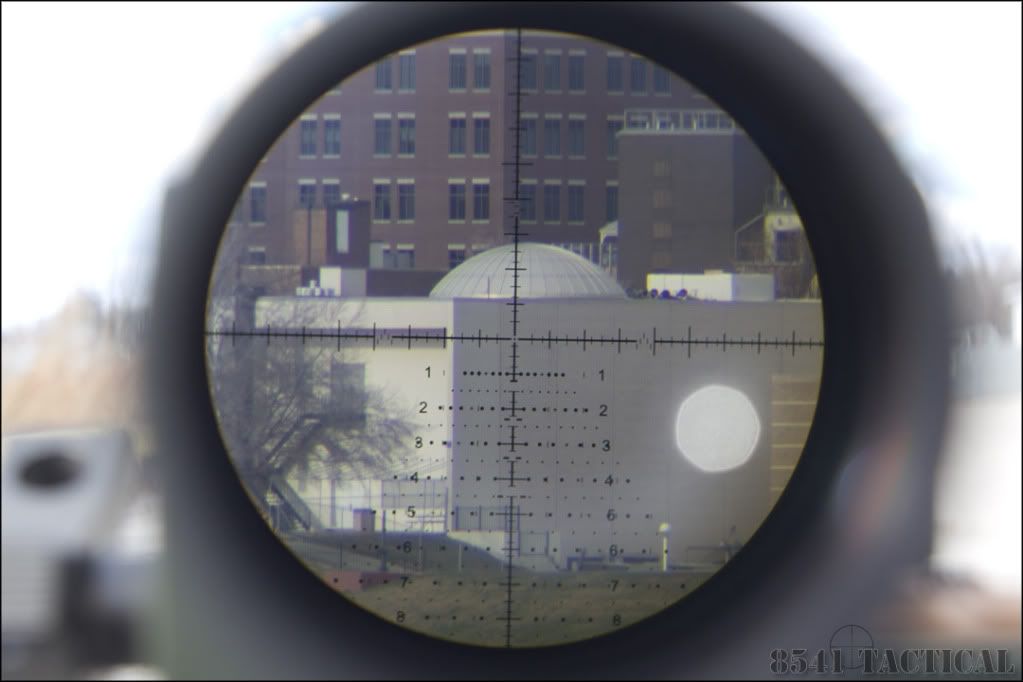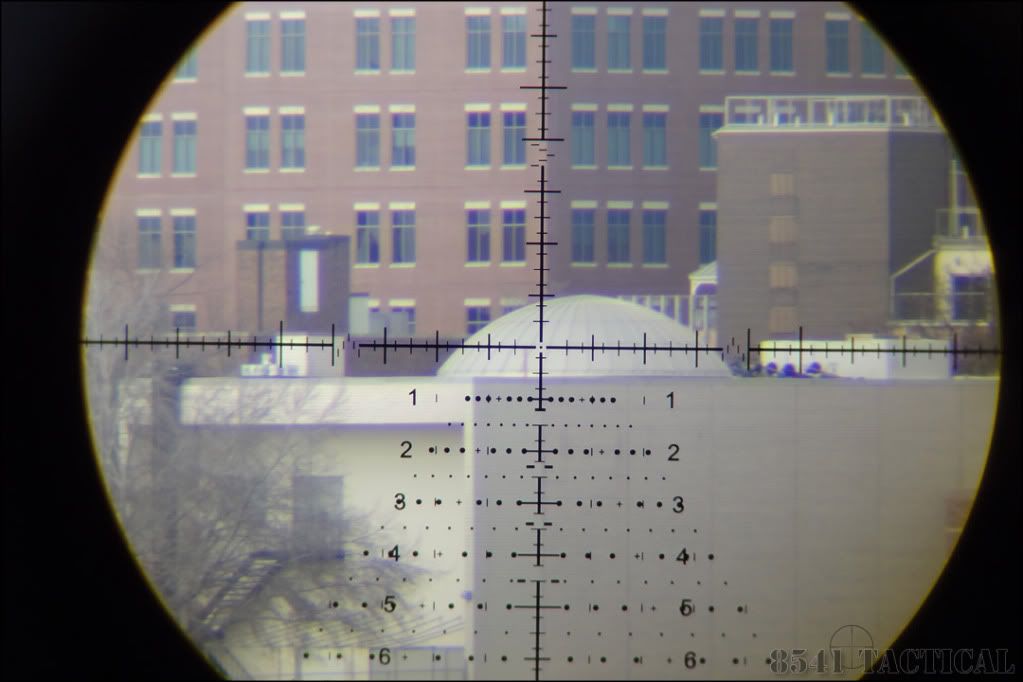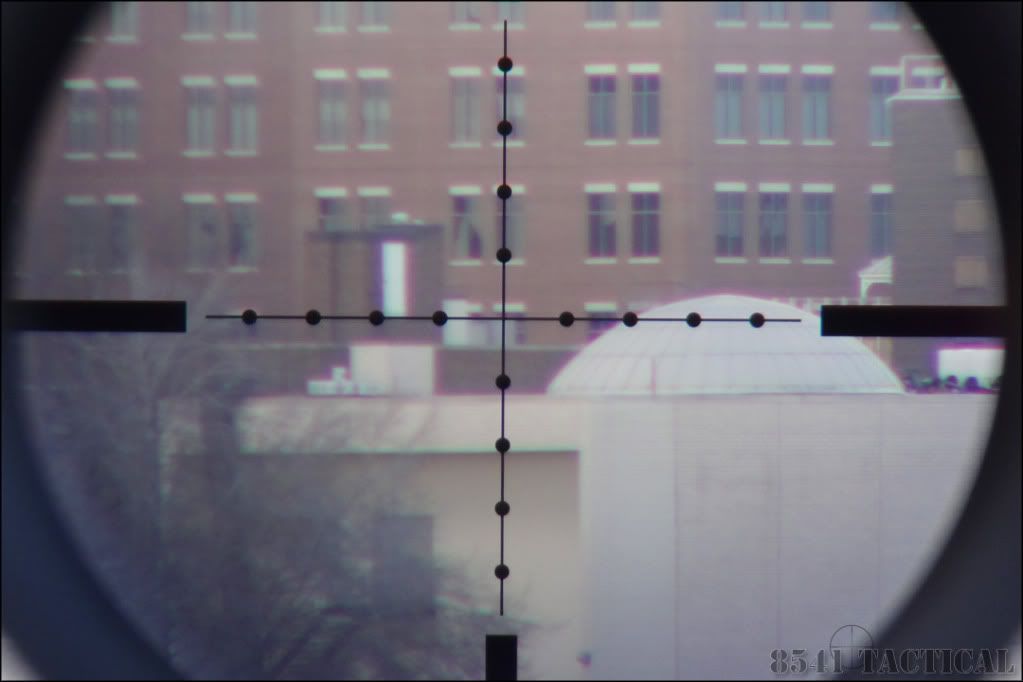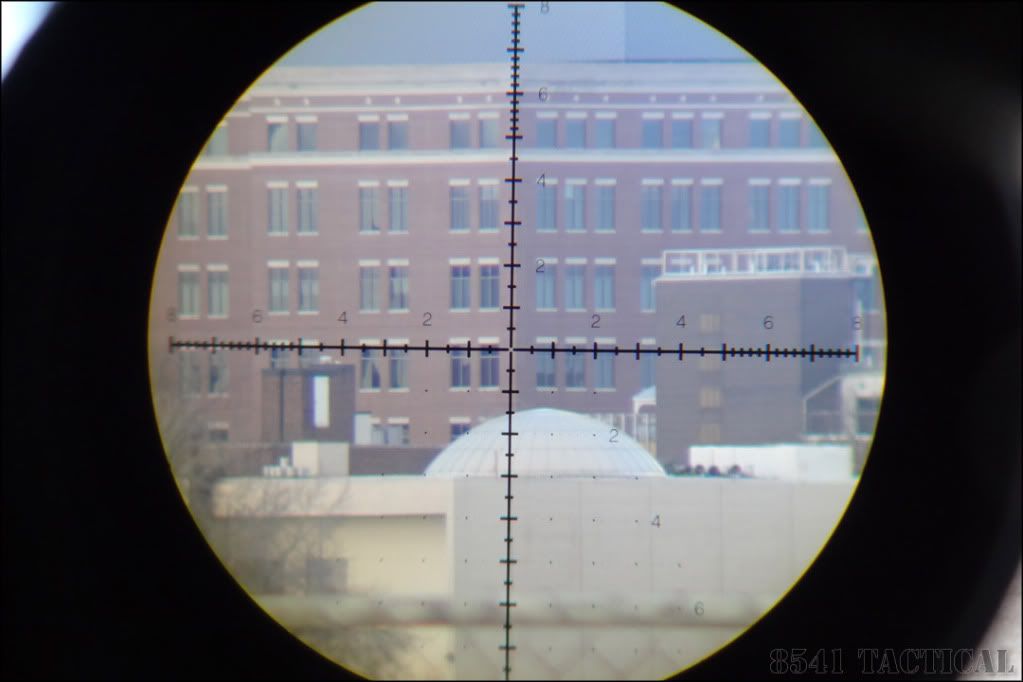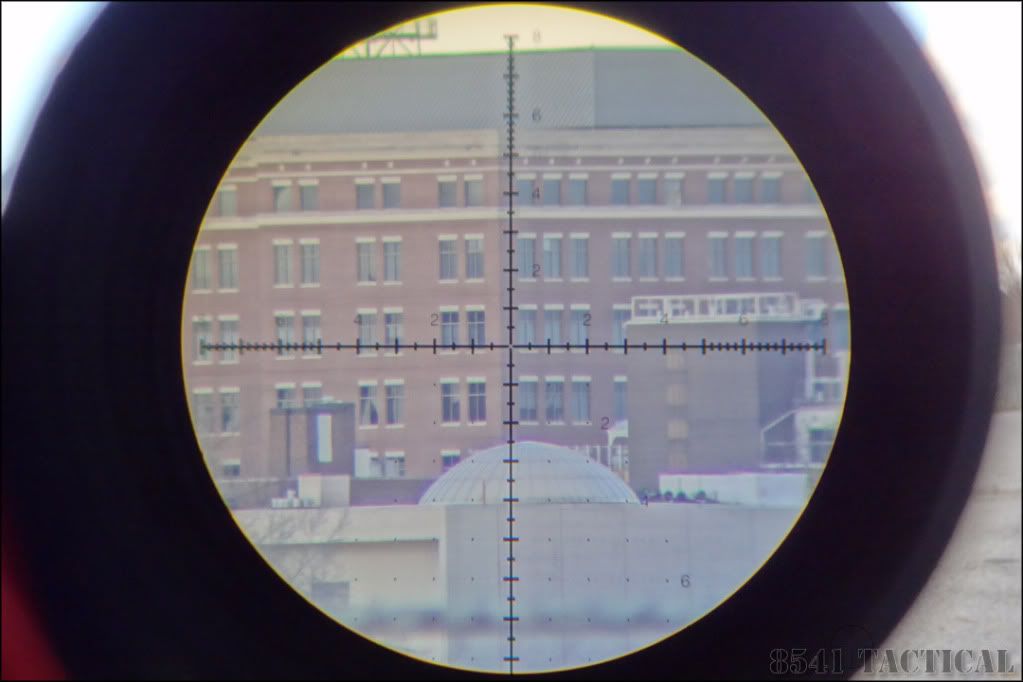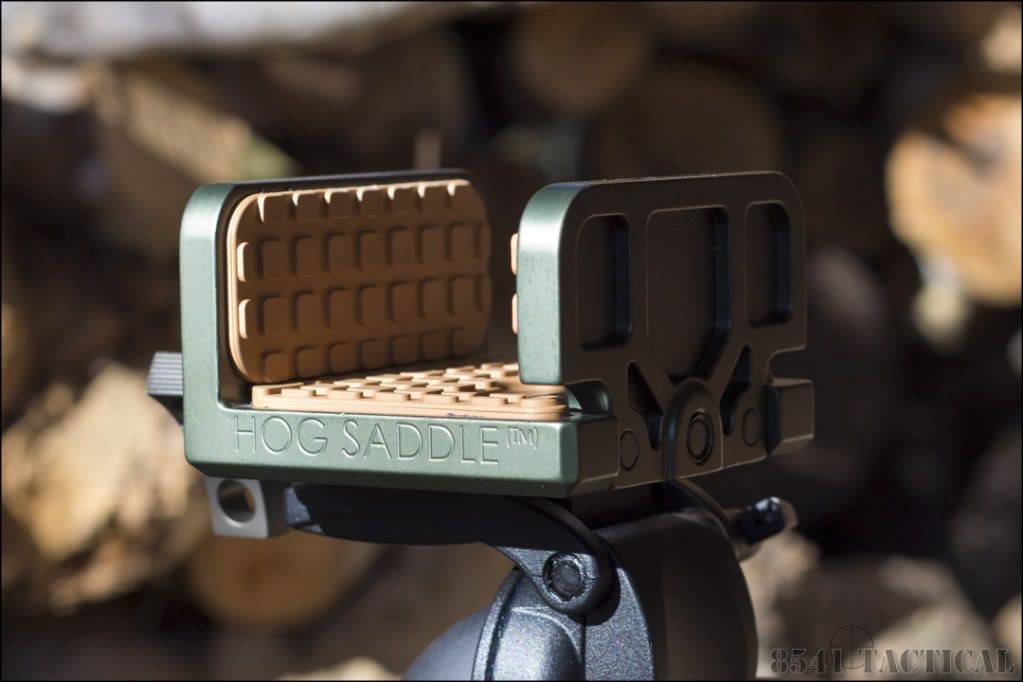Re: HDMR Quality Control - UPDATE
OK,
The lighting was not ideal because it was changing from shot to shot. It was cloudy with bright sun peeking through from time to time. Conditions were mostly low contrast.
All of the photos so far have been relatively close range, so I decided to show a long range background. The building is 1600+ yards away.
The first photo is take with my Canon 60D with a fairly high quality lens. This lens is prone to a little flare, but I have not seen any CA in photos taken with it.
You can see that there is very slight CA on hard edges. There is a little lens flare because the camera has a 60+ mm objective. I feel that this photo is a more representative of what I was seeing with my naked eye. The rest of the photos are taken with a "point and shoot" camera that seems to magnify the fringing. I am using them for two reasons. First, since they magnify the fringing it's easier to compare it. Second, as a practical matter I can't get the DSLR behind scopes mounted on most rifles. It's just too bulky.
---------------------------
This is the same setup as above, but with a Sony HX9V compact camera. You can see there is slightly more than on the first photo.
---------------------------
This is a Bushnell Elite 4200 Tactical 6-24x50mm. I have been told the coatings are the same as the HDMR. The photo isn't as clear as I would like. The wind was picking up substantially causing the sight picture to vibrate.
---------------------------
This is the Super Sniper 5-20x. The reticle is not crystal clear because this scope has never been mounted and the diopter has not been set.
---------------------------
This is the Vortex Razor HD. In this scope the fringing is green instead of the purple/violet in the other optics.
Here is another photo as the light conditions changes and the fringing goes to violet.
---------------------------
I realize the photos are not all the same magnification. For that I apologize. The zoom on the camera reset every time it shutoff. I was under a time crunch to get the shots before I lost the light or attracted too much attention.
As I really started looking for it, I began to notice that every single high magnification rifle scope I have has some manner of chromatic aberration. Some are more pronounced than others, but it is present in all.
Now we have to get down to the core of the matter. How does this effect the shooter?
I understand that the HDMR is not a cheap scope. It's a good deal of cash for most shooters and they expect a high level of quality for that investment. I agree with this. I just want to make sure we are setting a reasonable bar for this optic.
I won't try to convince those who are dissatisfied with their HDMR that they should just accept it. You spent your money, you get to choose if what you bought is acceptable to you.
I just want to make sure that they guys who are reading this and considering an HDMR purchase get a realistic idea of what they are buying.
This whole deal has taught me a couple things. It has taught me that something that may be relatively minor to me, may be a deal breaker to someone else. It has also taught me that I need to add a couple of steps to my scope testing.
I will caution that when you are looking for CA in a scope, test it at realistic ranges. When I stepped out my door and shot those pics at the mailbox, it was 69 yards away. Rarely will I ever shoot a 69 yard target on maximum magnification. As the ranges grow, the color fringing is less apparent.
In the real world with me eye on the objective sighting in on a long range target, the HDMR has more CA than the other three scopes I had out there. The Elite 4200 was second with the SS third. The Razor HD had so little that it wasn't really noticeable without the camera.
Again...the camera magnifies what I am seeing with my eye. When we photograph through the scopes we are adding another group of lenses that may or may not be of similar quality to the scope I am photographing. Please always keep that in mind when looking at "through the scope" photos. Most optics manufacturers will tell you how much of a PITA it is to get real world reticle shots that are high enough quality to use in advertising.
I have to duck out to do some family stuff, but I will try to answer any questions later today. This was far from a scientific test, and unfortunately I have no control over the lighting conditions. Later today I will be shooting another email to Bushnell outlining what I have seen comparing the scopes. Hopefully tomorrow I can get some side by side shots with a S&B and some Nightforce Scopes.
These photos would not have been possible without the HOG Saddle from Shadow Tech. It makes it way too simple to clamp scopes down for photos.
http://www.hogsaddle.com/

